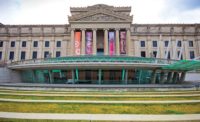New York’s largest buildings will have to be retrofitted to produce fewer carbon emissions under one of the first laws passed by the city council as part of the city’s sweeping Green New Deal. Under the law approved April 18, all buildings 25,000 sq ft or more must reduce their emissions 40% from 2005 levels by 2030 and 80% by 2050.
About 50,000 buildings, or 2% of the city’s building stock, will be required to cut emissions, including the Empire State Building and Trump Tower.
“New York City just enacted the broadest climate change policy for any city in the world,” says John Mandyck, CEO of New York’s Urban Green Council. “The law is really breaking new ground.”
The policy surpasses building emissions programs that have been introduced in Washington, D.C., and Seattle, says Elizabeth Beardsley, senior policy counsel for the U.S. Green Building Council. “New York City has been working on this for a long time and a lot of other cities are watching to see how it works.”
The bill is part of the city’s $14-billion Green New Deal. In a speech on Earth Day, Mayor Bill de Blasio said future legislation will include bills banning glass and steel buildings because they are energy inefficient. “Some of the ones at Hudson Yards actually are examples of the wrong way to do things,” he said.
On April 18, the city council also passed measures to require solar panels on some buildings, establish financing mechanisms to help pay for the retrofits, and begin a study to determine if 24 gas-fired power plants in the city can be shut down. “We are on the precipice of climate disaster, and New York City is acting,” said Corey Johnson, the council speaker, in a statement. “I hope other cities follow suit.”
More than 20,000 jobs will be created around the proposals, says Beardsley.
The law has been fought by real estate developers and could reshape their industry. “I think this new law could be the largest disruption in the real estate industry in our lifetime,” Mandyck says. “I think new technologies will be invented.”





